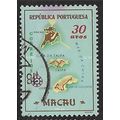Alte Weser Lighthouse, Germany - Leuchtturm - postcard c.1970s
- Condition : Used
- Dispatch : 2 Days
- Brand : None
- ID# : 205030096
- Quantity : 1 item
- Views : 256
- Location : United Kingdom

- Seller : justthebook (+1699)
- Barcode : None
- Start : Sun 03 Oct 2021 12:33:53 (BST)
- Close : Run Until Sold
- Remain : Run Until Sold
More Listings from This Seller view all
Seller's Description
- Postcard
- Picture / Image: "Alte Weser" Leuchtturm / Alte Weser Lighthouse off the coast of Germany
- Publisher: Cramers Kunstanstalt Dortmund
- Postally used: no
- Stamp: n/a
- Postmark(s): n/a
- Sent to: n/a
- Notes / condition:
- Postcard
Please ask if you need any other information and I will do the best I can to answer.
Image may be low res for illustrative purposes - if you need a higher definition image then please contact me and I may be able to send one. No cards have been trimmed (unless stated).
------------------------------------------------
Postage & Packing:
Postage and packing charge should be showing for your location (contact if not sure).
No additional charges for more than one postcard. You can buy as many postcards from me as you like and you will just pay the fee above once. Please wait for combined invoice. (If buying postcards with other things such as books, please contact or wait for invoice before paying).
Payment Methods:
UK - PayPal, Cheque (from UK bank) or postal order
Outside UK: PayPal ONLY (unless otherwise stated) please. NO non-UK currency checks or money orders (sorry).
NOTE: All postcards are sent in brand new stiffened envelopes which I have bought for the task. These are specially made to protect postcards and you may be able to re-use them. In addition there are other costs to sending so the above charge is not just for the stamp!
I will give a full refund if you are not fully satisfied with the postcard.
----------------------------------------------
Text from the free encyclopedia WIKIPEDIA may appear below to give a little background information (internal links may not work) :
*************
The Alte Weser Lighthouse is located offshore from the estuary mouth of the river Weser in the German Bight, southern North Sea. It was built on sand between 1961 and 1964. The lighthouse took over duties and replaced the historical Roter Sand Lighthouse on 1 September 1964. The latter had been built from 1883 to 1885.
General aspects
The Alte Weser Lighthouse was built between 1961 and 1964. It consists of steel-coated ferroconcrete and a steel superstructure. It was built offshore into a sand bed at a depth of 11 m below mean sea level. Its height measures about 40 m above msl. Depending on the color of the light beam, its visibility is between 18 and 23 sm. The only inhabited place where the Alte Weser or Roter Sand Lighthouse can be seen with the naked eye is the German island of Wangerooge.
Technical data
The light characteristic is "F WRG", i.e. a continuous light, coloured white, red or green depending on the bearing of the lighthouse. The light is emitted by a 2000 Watts Xenon lamp. On low visibility conditions a foghorn sounds a signal, the Morse code letters "AL" with an interval of one minute.
On the tower a number of additional navigational and meteorological devices are installed next to the optics. Directional antennae and a radar serve as means of security in the Weser approach while an anemometer and an automated tide gauge collect data on wind conditions and water levels. The tower has a built-in emergency power system and provides accommodation for a maintenance crew.
Construction
The Roter Sand (German transl. "red sand") is located in the outer Weser waterway in the German Bight, southern North Sea. At the end of the 1950s the lighthouse had been badly damaged by corrosion, corrosion, and leaching of its concrete. To replace the old lighthouse, the Alte Weser was built in the years 1961–1964 not far from the former location. Simultaneously, the conditions for the ships' traffic in the "Outer-Weser" waterway were intended to be improved and the new lighthouse was planned to be established as an offshore part of the radar chain on the Weser between Bremen and the North Sea (fig. 1).
The novel form of the tower (fig. 2), i.e. its downward tapering tower shaft together with its cantilevered upper storeys was based on a design by engineer Andreas Carstens, Bremerhaven. The conical design of the tower was intended to minimize exposure to waves and drift ice. The German Waterway Administration, the Wasser- und Schifffahrtsamt (WSA) Bremerhaven as the responsible governmental agency, assigned the task of workmanship to a cooperative of companies: Philipp Holzmann, Strabag Bau AG, Hermann Moeller.[3] This cooperative instructed the Howaldtswerke in Kiel to carry out the steelworks.
The steelwork's for the tower shaft, the upper storeys and the equipment were carried out in a dry dock of the Howaldts factory in Kiel (fig. 3). The tower shaft was towed through the Kiel Canal towards its destination site in the Outer-Weser waterway (fig. 6). For this purpose a floating offshore lift platform which had been supplied with a central cut-out for the tower was used. At the site the shaft was lowered and subsequently jetted into the sand to the intended depth. After feeding in a layer of underwater concrete, the shaft was evacuated and the additional layers of ferroconcrete were installed (fig. 5).
Frequently, adequate supply of building materials was hampered and delayed, because relatively small coasters had been contracted for transport, which were quite sensitive to the state of the sea and weather conditions. Timing was especially important in order to ensure joints were constructed correctly. To this end, all building materials needed for the underwater concrete had to arrive on time and without delay. Therefore, an optimal weather period was required.
A further interruption happened due to two accidents. The first was fatal when a sudden leak killed two workers. However, the exact reason for the accident was never fully revealed. The tower shaft which had been lowered and jetted into the sand had to be abandoned. The upper storeys were detached and transported back to Kiel on the offshore lift platform for later use. One year later the upper storeys were re-used on a second tower shaft nearby. The old stump of the tower shaft remains underground today. The storm surge of 1962 which cost many human lives in Hamburg and other places on the German coast had no impact on the construction of the lighthouse. The first accident did however force a new start to the works in Kiel, causing a delay of one year. The second accident happened because of a malfunction of the gripper at the front legs of the offshore lift platform. A second platform had to be used in order to repair and replace the first one. In the third year, after the lift platform had been repaired, the construction works resumed at the tower shaft and were subsequently completed.
Next, the offshore lift platform could pick up the upper storeys which were still stored at Kiel (fig. 6) to join them with the tower shaft in the North Sea. Under favourable weather conditions the upper storeys were placed on top of the tower without complications (fig. 7). Now, the completing works such as installation of the optics including the corresponding blinds and the installation of the standby sets were implemented. The power supply of the lighthouse demanded special attention. A 6 kV cable was run from the Robbenplate Lighthouse (fig. 1) towards Alte Weser, jetted in using a special device (Einspuelstiefel, Fig. 8) and threaded into the tower through a protective cable conduit. In addition, measures had to be taken to adopt the same cable for the planned Tegeler Plate Lighthouse (see below). The foundation of the building was safeguarded with stone ballast poured down on bush mats against rinsing and water erosion. In 1964 the light of Alte Weser Lighthouse went into service (fig. 9). In 1972 the four keepers were displaced when the lighthouse became automated.
Listing Information
| Listing Type | Gallery Listing |
| Listing ID# | 205030096 |
| Start Time | Sun 03 Oct 2021 12:33:53 (BST) |
| Close Time | Run Until Sold |
| Starting Bid | Fixed Price (no bidding) |
| Item Condition | Used |
| Bids | 0 |
| Views | 256 |
| Dispatch Time | 2 Days |
| Quantity | 1 |
| Location | United Kingdom |
| Auto Extend | No |



 for 1 item(s)
for 1 item(s)
















